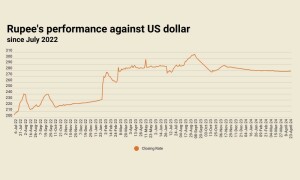EDITORIAL: National Electric Power Regulatory Authority (Nepra) has posted on its website an inquiry report on total system power collapse that took place on 9th January 2021. The whole country had plunged into darkness a few minutes before midnight, and it took 22 hours to completely restore the system. The failure is said to have been triggered by negligence of the staff at Guddu Power Plant, but the real worry is how a human error at one switchyard resulted in a complete blackout across the country. Technically, there should be checks and balances in the system to not let one error cascade into a complete shutdown in north and south transmissions lines including both grids – National Transmission and Despatch Company (NTDC) and K-Electric.
This means the protections within the system were not right. The fundamental question arises as to how come all eggs were kept in one basket and metaphorical slippage of that basket left everyone high and dry. The limitation of NTDC system should be brought to the fore and addressed on priority. The unavailability of ‘black star’ facility in majority of the power plants should not be taken lightly. The Nepra’s inquiry team has project and protection-related experience; their capabilities are limited in terms of understanding and smooth operation at the system level. There is a pressing need to have an independent view – international experts for example, to identify the weaknesses within NTDC and KE systems and power plants. The need is to find out and implement ways to diversify the system to ensure that such a colossal error does not happen again. This is an economic and security threat to the country. By no means it can or should be taken lightly. According to the inquiry report, the bolted fault occurred on the 220KV switchyard at Guddu. One circuit breaker (D12Q1) was closed at 23:35PST; but the earth switch of isolator (D12Q31) opened two minutes later at 23:37PST. Three minutes later at 23:40PST the system tripping occurred. The human fault was that circuit breaker was closed without timely opening of isolator, and all this happened without the instructions of National Power Construction Corporation (NPCC). But symbols of earth switches installed with isolators were not shown in a single line to make it operate smoothly.
The real issue, therefore, is why there are not enough safeguards within the system to let that breakdown not cascade into frequency tripping across the country. A comprehensive study from a reputable international firm is recommended to address the Unstable Power Swing resulting from a bolted fault at a switchyard. Had the ‘black star’ facility been available at all power plants (above 200MW) the restoration could have been much swifter. This would have allowed at least one machine at each power plant to operate in island mode during low frequency situation. The question is why the ‘black star’ facility is not available at plants. The frequency dropped because of the winter load phenomenon and unavailability of hydel generation. Because of higher load in north, around 3,000MW was being exported at the time of blackout from south to north. The linkage was broken. There was a clear case of overloading in south. Some power plants and 500KV lines tripped on overvoltage/over speed/over frequency. Due to this loss of generation, an under-frequency condition was created in south zone. The north zone came under the situation of under-frequency and did not survive. That is the story of the blackout. It has exposed the weaknesses of the system. The progress in the power sector in the past decade has largely remained confined to the installation of new power plants. The issues in transmission and distribution have largely been ignored. It is a wake-up call for NTDC and KE systems to upgrade themselves and to have all the requisite protocols to not let that happen again. Moreover, Nepra, the regulator, needs to make sure that it’s proactively involved. In other words, it must act in anticipation of future problems, needs, or changes.
Copyright Business Recorder, 2021























Comments
Comments are closed.